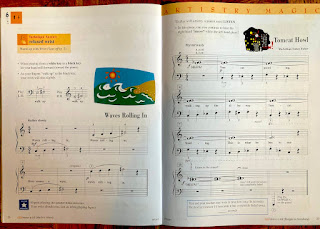📑 Free: Piano Lesson Notes Email Template
This is my typical email template for weekly piano lesson notes. I add and subtract categories as needed. For kids, I really enjoy finding matching emojis for each song.
I prepare my notes ahead of time based on my lesson plan to save time after the lesson. If the lesson goes differently than I planned, I will make a note of it in my notebook.
Feel free to copy and paste this for your piano lesson notes emails!
To: parent@somewhere.com
Subject: Lesson Notes MM/DD/YYYY
Dear Student,
In today's lesson, we learned about tempo and beat. Practice clapping the beat along with songs at home. I am so proud of your progress so far. Continue practicing 6 days a week or until your assignment is completed.
Assignments
Technique: Learn the C 5-Finger Scale.
Lesson Book #, p. 1-2
🐑 Mary Had A Little Lamb - Transpose to the key of G.
🌟Twinkle, Twinkle Little Star - remember to stretch 4th finger to G, 5th finger will play A.
🏰 Disney Book
⛄ Do You Want to Build a Snowman? - learn the first line for the next lesson.
Listening: Twelve Variations on "Ah vous dirai-je, Maman" by Wolfgang Amadeus Mozart
Flashcards to Add
Middle C
Treble G
Bass F
Treble Clef
Bass Clef
Worksheet: Print and complete the attached notespeller for the next lesson.
App: Rhythm Cat Lite, Stage 1, Levels 1 and 2. Aim for 3 stars! ☆☆☆
Resource: Check out MusicTheory.net.
Have a great week!
--
Jane Doe
Piano Teacher, Jane Doe Piano Studio
janedoepianostudio.co
I hope you like using this template for your piano lesson notes. Do you use email for piano lesson notes? Why or why not? What are some categories you include in your notes?






















